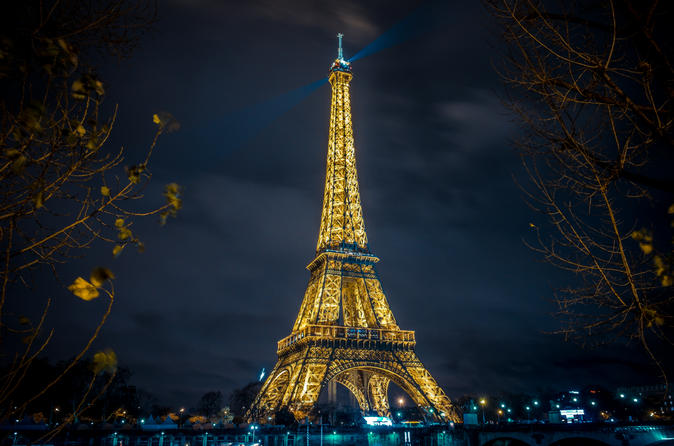
cpc
-
Posts
204 -
Joined
-
Last visited
Reputation Activity
-

-
 cpc got a reaction from webrunner5 in A7s SLOG2 Easier to Grade with Lumetri Color
cpc got a reaction from webrunner5 in A7s SLOG2 Easier to Grade with Lumetri Color
It doesn't have more highlights, whait it does is pull mid grey lower and clip signal at IRE 100. The lower midgrey point may create the illusion of more highlights latitude, but it is the actually opposite. The other three Cine curves go to IRE 109. Cine2 is supposed to be used "as is" and be broadcast safe (hence clipped at IRE 100).
I don't think any peaking setting will work well with slog. Peaking relies on contrast and contrast is very low with s-log. One way to sort of work around this is to pre-focus with a contrasty PP and switch to s-log for recording.
-
 cpc reacted to Zak Forsman in Review of Yiletec 13 inch monitor
cpc reacted to Zak Forsman in Review of Yiletec 13 inch monitor
I put up a slightly more detailed review at my site, but wanted to share most of my thoughts here too.
http://zakforsman.com/a-solid-13-3-field-monitor/
I've been kicking myself for not taking part in the Osee 15.6" Field Monitor group buys that were running a month or so ago. The current $995 price tag is a little hard for me to swallow, so I started hunting for a more affordable alternative. I found this 13.3" 1080p panel, called the Yiletec 1303MCPT. It had some crucial aspects: 1080p, full size HDMI port, built-in VESA mounts. So I pulled the trigger. It arrived today.
I set up my rig with the Odyssey 7Q+ sending a feed over HDMI, powered it up, and my initial reaction was: nice detailed image, black blacks, but the colors are wrong. I went into the monitors's Picture Menu and made some quick adjustments: pulled down the color saturation, set color temp, turned of noise reduction, and so on.
Within seconds I had pretty closely matched my Odyssey's screen. The second I knew this was a keeper, I ripped off the protective film covering the screen, and mounted it to a Kupo VESA light stand mount.
The listings for this monitor neglect some key details. I knew some specs before buying it. Brightness: 350cd/m2, Contrast: 700:1, Resolution: 1920×1080. But there were no reviews for it anywhere. I couldn't tell how much it weighed or how much control I'd have to dial in the image.
Happy to say it met most of my hopes. It's bright with good contrast and reminds me of my MacBook Air screen in many ways. Color rendition is good. In all likelihood this is an 8 bit display. I'm guessing it weighs about 3 pounds. The only thing I'm not crazy about is the glossy finish. But it's no different than the screen of my Odyssey 7Q+, or SmallHD 502. That being said, I am on the hunt for a suitable sunshade now.
Another concern I had was if there would be an issue with 24hz frequencies because only 60hz and 50hz were listed. So I ran through all the framerate settings the Micro Cinema Camera had to change its output and was glad to see the monitor black out and sync up with each of the 60hz, 50hz, and 24hz signals. It even displays the incoming signal frequency in the bottom left corner, confirming its compatibility without a doubt. I also can't detect any additional lag when viewed side by side with the monitor I'm looping the signal through.
Granted I've only had it in my possession for half a day, but I don't have any hesitation in recommending this monitor to budget conscious filmmakers who want a little more screen real estate on set. I bought the version housed in a plastic casing -- it's solidly built, don't let "plastic" make you think it feels cheap. However, there is also a metal version, but I was concerned about its weight. Either way, it's priced at $339 on Amazon. A steal. When I bought it, an additional $17 was taken off in the cart as a promotional discount. Even better. And a worthy addition to my arsenal.
Here's the link to the Amazon listing.
https://www.amazon.com/gp/product/B01DFZFYKW/
-
 cpc got a reaction from Ed_David in Now that DB16 is dead, will price go down?
cpc got a reaction from Ed_David in Now that DB16 is dead, will price go down?
If the Ikonoskop is an indication, it will eventually go WAY down. As all digital equipment does. Digital doesn't age well for obvious reasons.
-
 cpc got a reaction from jgharding in Resolve 12.5 Is Out
cpc got a reaction from jgharding in Resolve 12.5 Is Out
Drag and drop into the media pool works fine in Resolve?
-
 cpc got a reaction from kaylee in 4K RAW 120fps for £3k?! Say hello to the second-hand Canon C500
cpc got a reaction from kaylee in 4K RAW 120fps for £3k?! Say hello to the second-hand Canon C500
Exactly.
Even after whites compression there is still plenty of tonal info in there (more values per stop than in Cineon film scans, for example).
-
 cpc got a reaction from Nikkor in 4K RAW 120fps for £3k?! Say hello to the second-hand Canon C500
cpc got a reaction from Nikkor in 4K RAW 120fps for £3k?! Say hello to the second-hand Canon C500
Exactly.
Even after whites compression there is still plenty of tonal info in there (more values per stop than in Cineon film scans, for example).
-
 cpc reacted to Andrew Reid in 4K RAW 120fps for £3k?! Say hello to the second-hand Canon C500
cpc reacted to Andrew Reid in 4K RAW 120fps for £3k?! Say hello to the second-hand Canon C500
Isn't film and music so very middle-class these days?
Read the full article
-
 cpc reacted to iaremrsir in The Digital Bolex just got False Color
cpc reacted to iaremrsir in The Digital Bolex just got False Color
The Blackmagic Video Assist as well as the newer Atomos Flame and Inferno series. We're working on making the HDMI recording functionality more compatible with recorders.
False color works on the raw data to let you know when your first channel clips. Because the D16 doesn't do any internal highlight recovery or noise reduction, we thought it'd be good to know this. This means that you have anywhere from 1/2 to 2/3 of a stop more highlight range in the raw file than you'd get over HDMI. So In raw at 800 ISO you're gonna see close to six stops of overexposure range, but in the HDMI you're gonna see around 5 1/3.
I will ask about being able to separate the LCD from HDMI.
Our goal is to make the current camera as best as it can be before we start trying to sell people a new one.
-
 cpc reacted to Andrew Reid in I am depressed by the lack of articles on this blog.
cpc reacted to Andrew Reid in I am depressed by the lack of articles on this blog.
Hey Michal. I am glad someone has noticed this.
I have all the rumors sites in my news feed and I visit some of the other blogs, the truth is these are majorly demotivating for me.
It seems the general direction of the internet is going away from long form reviews and articles, into quickly thrown up deals and clickbate, along 2-3 minute quickly knocked up youtube video which are nice to have on in the background as you have a cup of tea in the morning, but contain very little actual useful information. If all the attention is going into the wrong content, so what motivation do I have to carry on with EOSHD?
There's still some great stuff out there but it's few and far between, and getting worse.
So I actually share your depression with the state of affairs.
EOSHD articles I used to do are almost unviable today... the formula is broken... the amount of effort required versus the lack of reward in putting so much information out there for free.
Geez. Thanks for the support... not.
Facebook and Instagram content is where it's at, sadly.
A finger swipe, 2 seconds, next.
In the end the audience will regret allowing the internet to dissolve into a trivial social network where appearances are valued above substance.
-
 cpc got a reaction from TheRenaissanceMan in NAB 2016. Can Ang Lee’s cinematic reality of laser projected 3D 120fps make 24p film obsolete?
cpc got a reaction from TheRenaissanceMan in NAB 2016. Can Ang Lee’s cinematic reality of laser projected 3D 120fps make 24p film obsolete?
3D is terrible in traditional 24 fps. 2D and 3D are very different forms and translating into 3D any affinities cultivated from 2D makes no sense. While I mostly don't care about 3D, HFR at least makes it bareable and not just a mess of motion artifacts striving to look "real". I wrote this a few years ago, when The Hobbit's HFR debate happened: http://www.shutterangle.com/2012/why-48-fps-is-good-for-3d-movies/
In this context I can only applaud Ang Lee's perspective.
-
 cpc got a reaction from Ivanhurba in Quicktime support for Windows terminated?
cpc got a reaction from Ivanhurba in Quicktime support for Windows terminated?
I think there are still some patents involved in Cineform for encoding outside of the Cineform GoPro installation codecs, even though it is SMPTE standardized. DNxHR in BM cams is probably a more likely development.
-
 cpc got a reaction from Ivanhurba in Quicktime support for Windows terminated?
cpc got a reaction from Ivanhurba in Quicktime support for Windows terminated?
It certainly isn't Apple's fault. Users demand QT native codecs like ProRes, camera manufacturers listen to them, and software vendors follow up by integrating QT.
DNxHD/DNxHR is essentially the VC-3 SMPTE standard and plays very well with another SMPTE standard -- the MXF container. Cineform is also a recent SMPTE standard (VC-5), and defined for MXF wrapping. It's not like if ProRes+QT is the only player in town.
-
 cpc reacted to Andrew Reid in Sony FS5 firmware update version 2.0 - FS RAW costs $600 / 500 euros
cpc reacted to Andrew Reid in Sony FS5 firmware update version 2.0 - FS RAW costs $600 / 500 euros
Also adds an 'auto' setting to the electronically variable ND filter.
Released May 2016.
Read the full blog post
-
 cpc reacted to Andrew Reid in Sony A6300 review (rolling) - Striking image but nagging issues
cpc reacted to Andrew Reid in Sony A6300 review (rolling) - Striking image but nagging issues
Welcome to my rolling review of the Sony A6300. Like the rolling shutter of the A6300 this review takes a long time to get from the top to the bottom so grab a hot drink (be careful not to overheat) and enjoy the ride...
Read the full review on EOSHD here
-
 cpc reacted to Phil A in Quick unscientific comparison: SmallHD 501 & VideoDevices PIX-E5
cpc reacted to Phil A in Quick unscientific comparison: SmallHD 501 & VideoDevices PIX-E5
To complete today's monologue, I already got the answer from VideoDevices:
Obviously I missed the fact that it's in the user guide even though I quickly read through it. Dumb, sorry about that. It doesn't mention if there's any "minimum" time to be powered on to activate that. Could you test it @bunk ? Like, cold boot, wait 30 seconds, turn it off, wait a few minutes, turn it on again.
-
 cpc reacted to Phil A in Quick unscientific comparison: SmallHD 501 & VideoDevices PIX-E5
cpc reacted to Phil A in Quick unscientific comparison: SmallHD 501 & VideoDevices PIX-E5
Hey guys,
I'm not sure anyone cares, considering that these are two quite different creatures, but while I have both the SmallHD 501 and PIX-E5 still here I made a rough comparison between the two.
Quick upfront comment: the SmallHD 501 is a pure field monitor while the VideoDevices PIX-E5 can record in ProRes to a Speed Drive (a mSata SSD in a proprietary USB3 case). I have only tested the monitor functions and not the recording. If you're looking for an alternative to a Shogun or Odyssey you will want the PIX-E.
The SmallHD 501 allows to attach the sidefinder attachment, turning it into a not perfect but good EVF.
As most know, both of them are field monitors with 5 inch 1920x1080 pixel IPS screens. Both of them run on dual batteries so you can hot swap during use, the SmallHd using the ubiquitous Canon LP-E6 while the PIX-E5 takes the just as common Sony L batteries. Both monitors have a lot of exposure, focus and framing helps and can load LUTs from a SD card, a great feature to separate them from the cheaper low budget offering when shooting LOG profiles. So far with the similarities, I'll go a bit deeper on the specific stuff and differencies.
Models and operation:
The Small HD 501 is the cheaper 500series model, lacking the SDI in- & outputs that the more expensive SmallHD 502 brings, otherwise boasting exactly the same features. There's also more expensive 7 inch models. The SmallHD operates completely over the joystick plus back button, you'll won't have smudges on the screen like with a touch screen.
The VideoDevices PIX-E5 is the more expensive 5 inch PIX-E due to the SDI in- & outs, there's also a cheaper PIX-E5H that only has HDMI . Just like with SmallHD, VideoDevices also makes a 7 inch model. While the SmallHD has a very minimalist operating approach, the PIX-E5 on the other hand features a twist & push know on one side, 13 buttons on the front and touch screen in addition.
I'd give the point here to the PIX-E, it's just more pleasant to set up and toggle the functions.
Operating system logic:
The 501 offers a page logic. You can create multiple pages that you set up with the tools of your choice (in whatever combination you need) and then just left-right jump with the joystick between the pages. So you might have one page with all your tools to set the right exposure and then the next page with your framing guides and focus helps. Nifty.
On the PIX-E5 you can activate and deactivate the different tools with the buttons on the bottom of the screen, configure them by holding the button. Works easy and quick, especially on combination with the touch screen.
I'll give this point to the SmallHD. While I think setting up the tools is quicker on the PIX-E, you only set them up once and then toggle between pages on the 501 while you would always turn tools on and off on the PIX-E. But this is by a hair, I think both is perfectly fine, might be a draw for others.
Exposure tools:
Both have configurable zebras, false colour, histogram, waveform and vectorscope. They feel slightly laggy and pixelated on the PIX-E but that's nit picking. A clear draw.
Focus tools:
They both have colored edge peaking in configurable strength and color.
The 501 features additional edge sharpening that emphasizes in focus edges so it's really easier to pull focus directly from the full screen video without the distracting peaking colors. It works quite well in my opinion and is better than colored edge peaking when using a nice big 5 or 7 inch monitor.
The PIX-E5 features a cool zoom function to punch in on the picture via touch screen, you can even move the zoomed frame area.
Which is better? It depends. For me I'd say the full screen edge sharpening is better for run & gun where you want to keep an eye on the whole frame while the great punch in is good when shooting from sticks or in a more narrative setting.
Inputs & Outputs:
Both feature HDMI and SDI depending on the model as well as doing loop through. The point goes clearly to the PIX-E5 though as it has 4k via 6G SDI and HDMI while the Small HD only does FullHD. In addition the PIX-E5 can do FullHD up to 120fps (not that most consumer/prosumer cameras would even give that out, they only do it internally).
Image lag:
I've tested this point because a lot of people complained about the image lag of the PIX-E5 with roughly 5 frames of delay. VideoDevices really improved this a lot with the last firmware updates. Both monitors show a comparable amount of delay connected via HDMI to a Samsung NX1 or Nikon D750. If shot the camera screens and monitors with the iPhone in 240fps and both monitors lagged roughly the same behind the camera screens and reality.
Keep in mind that if you do loop through, there will be additional delay. The SmallHD won't work on the NX1 but it works when looping through the PIX-E5 (makes you wonder how SmallHD is incapable to fix this if even that is enough?) but obviously it will lag even more then. This is probably only relevant for the people who want to run multiple monitors/recorders on one camera to have separate view for operator and focus puller (and director).
Recording:
DUH! PIX-E5 because the SmallHD 501 is no recorder. In addition the PIX-E5 comes with the PIX-LR module to high quality audio features such as phantom powered XLR inputs.
Weight and size:
The SmallHD 501 is smaller by quite a margin, I didn't measure them but you can see it on the picture or look it up in the tech specs.
The SmallHD 501 weighs 205g without batteries and 365g with my two aftermarket LP-E6. These bring 2000 mAh each.
The VideoDevices PIX-E5 is 450g without batteries and reachs 635g with two aftermarket NP-F550 (2900 mAh each) or, if you need a lot of juice, 1050g with two NP-F970 (7800 mAh each).
We don't have to discuss this, it's clearly in favor of the SmallHD 501. This was when using them as pure monitors, if you add the Speed Drive to record to the PIX-E5 will get even heavier. So when shooting with a A7s with a vintage lens, the PIX-E5 with batteries and media is as heavy as the camera. This is actually on the level of the bigger Shogun. One reason clearly is the superior build quality. While the SmallHD 501 is in no way flimsy, the PIX-E5 has a massive metal housing used for robustness and to dissipate heat (it also has an active cooling fan but the volume is perfectly fine).
Start up time:
Here comes the last point in my list and the absolute deal breaker for me. Everything above would be perfectly fine with both monitors and I think both are great choices but depending on how you want to shoot, the start up time of the PIX-E5 will be unacceptable.
I've stopped the time between pushing the button / shoving the slider and the image appearing on screen for both monitors multiple times.
SmallHD 501: 3 seconds
PIX-E5: 32 seconds
For me that was just not workable as I like to pull the camera out of the bag, flip it on and shoot. I often won't want to stand around 30 seconds and wait for the monitor to power on. If you're shooting a music video or a narrative that might be fine though, it's more some documentary & travel style situations where I see this as a problem.
So this is my rough and brief impression of the two monitors (slash recorder). To be honest I think the VideoDevices PIX-E5 is the more extensive product, especially with the recording function, but due to the difference in weight and start up time I see the SmallHD 501 as more usable in my personal opinion and goals.
I'm sure I forgot something and will then add that later. If you have any questions, just ask.
[edit] There is further information about the startup time of the PIX-E5 further down in this thread.
-
 cpc got a reaction from Marco Tecno in Does Audition CC (and Premiere) support the 6 core i7 5820k?
cpc got a reaction from Marco Tecno in Does Audition CC (and Premiere) support the 6 core i7 5820k?
Dunno about Premiere but 2GB video RAM is not enough for 4K in Resolve. It should be fine for 1080p though.
-
 cpc got a reaction from Dan Wake in Does Audition CC (and Premiere) support the 6 core i7 5820k?
cpc got a reaction from Dan Wake in Does Audition CC (and Premiere) support the 6 core i7 5820k?
Dunno about Premiere but 2GB video RAM is not enough for 4K in Resolve. It should be fine for 1080p though.
-
 cpc reacted to Andrew Reid in Fuji X Pro 2 video quality a huge step up - hands on with the final hardware, pre-production firmware
cpc reacted to Andrew Reid in Fuji X Pro 2 video quality a huge step up - hands on with the final hardware, pre-production firmware
Typo sorry, meant film grain simulation. The film simulation (colour, contrast) modes are alive and well in video mode like I said at the top of the post, that's one of the main reasons for getting it!
-
 cpc got a reaction from Liam in budget "cinematic" small sensor?
cpc got a reaction from Liam in budget "cinematic" small sensor?
BM Pocket with an optical AA filter?
-
 cpc got a reaction from benymypony in budget "cinematic" small sensor?
cpc got a reaction from benymypony in budget "cinematic" small sensor?
BM Pocket with an optical AA filter?
-
 cpc got a reaction from austinchimp in budget "cinematic" small sensor?
cpc got a reaction from austinchimp in budget "cinematic" small sensor?
BM Pocket with an optical AA filter?
-
 cpc reacted to redimp in BMPCC RAW is not flat?
cpc reacted to redimp in BMPCC RAW is not flat?
I have JUST finally make it work. Thank you, I appreciate your help, if it was not for you I would think my camera is broken.
-
 cpc got a reaction from redimp in BMPCC RAW is not flat?
cpc got a reaction from redimp in BMPCC RAW is not flat?
Photoshop (which uses Adobe Camera Raw) will only have the Embedded profile available since it doesn't recognize Blackmagic cameras. ACR debayers in ProPhotoRGB, and then does another transform (to sRGB) on display and export. This is approximately equivalent to rec709 in Resolve.
Resolve will not debayer in BMDFilm unless you set it to do so. Photoshop will not debayer in BMDFilm, because it doesn't know what BMDFilm is.










